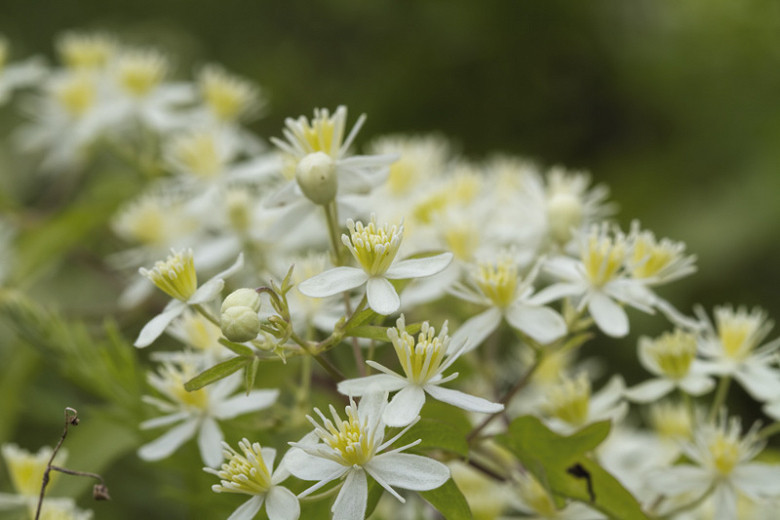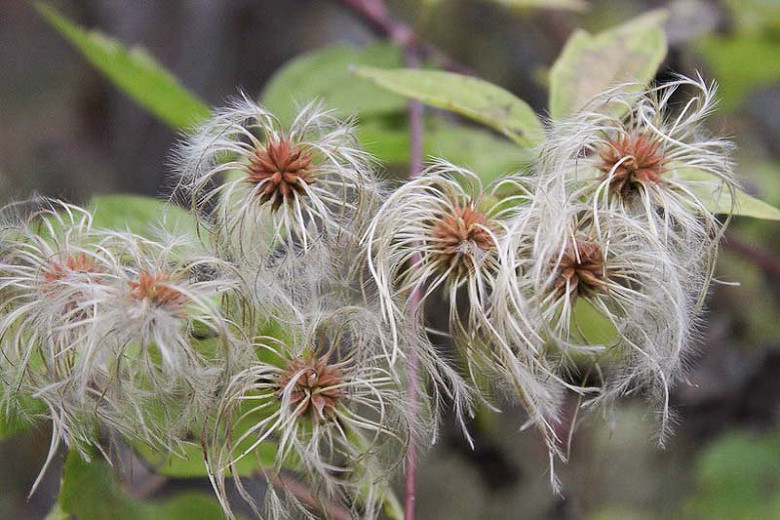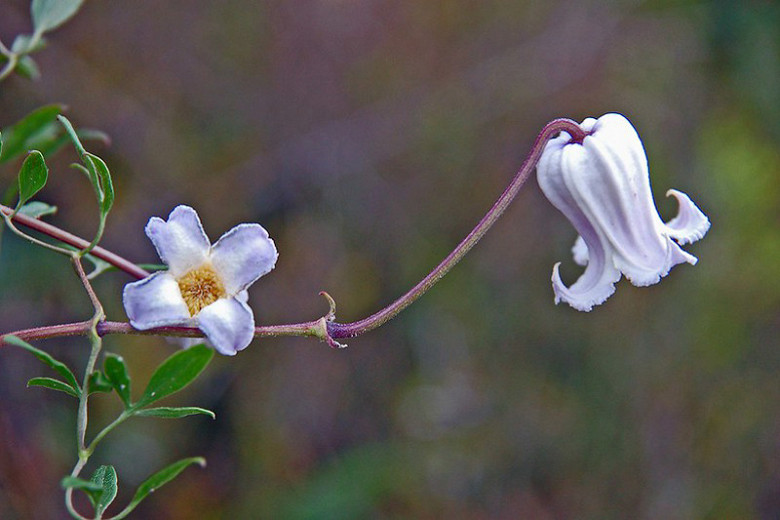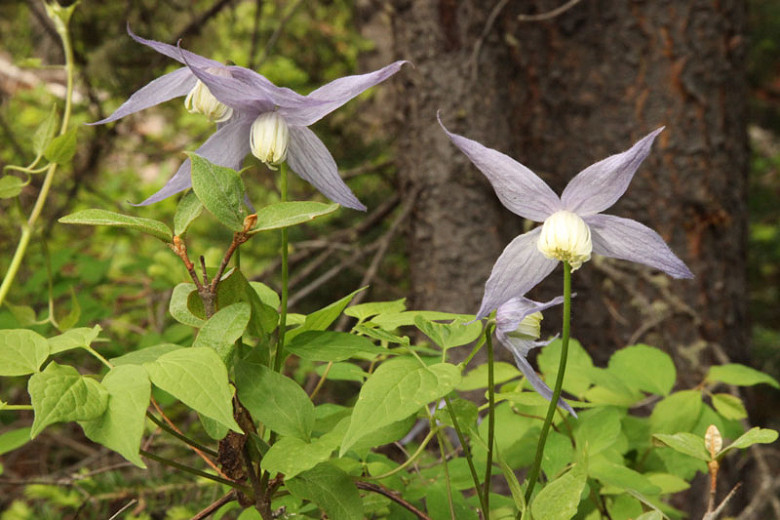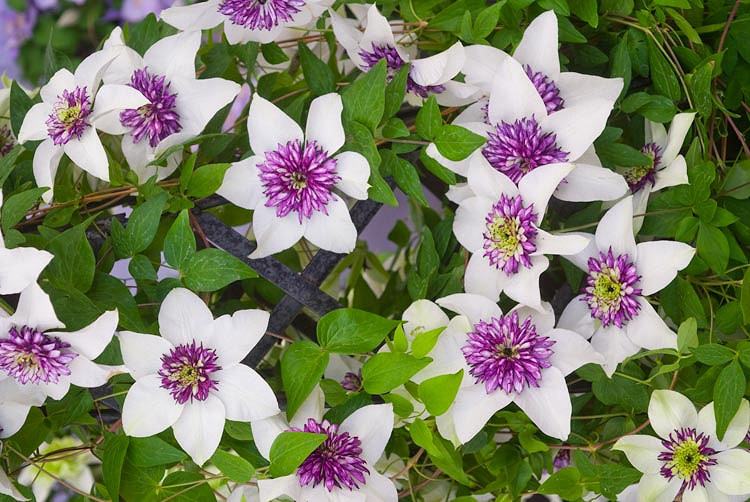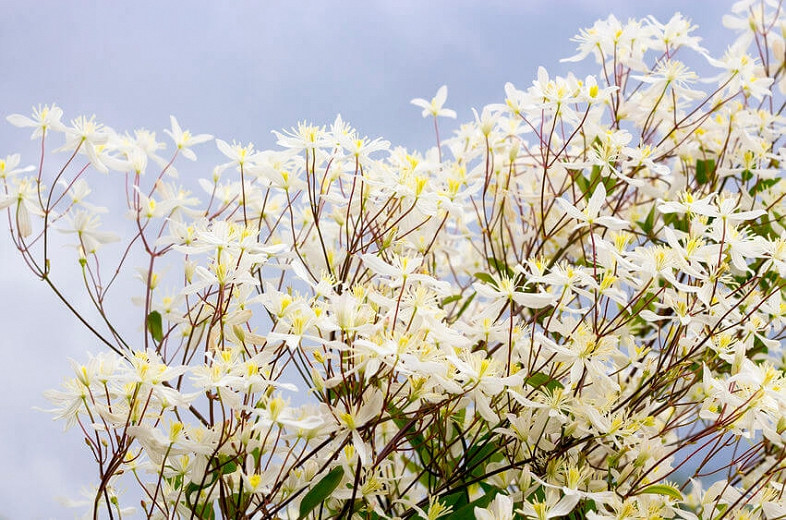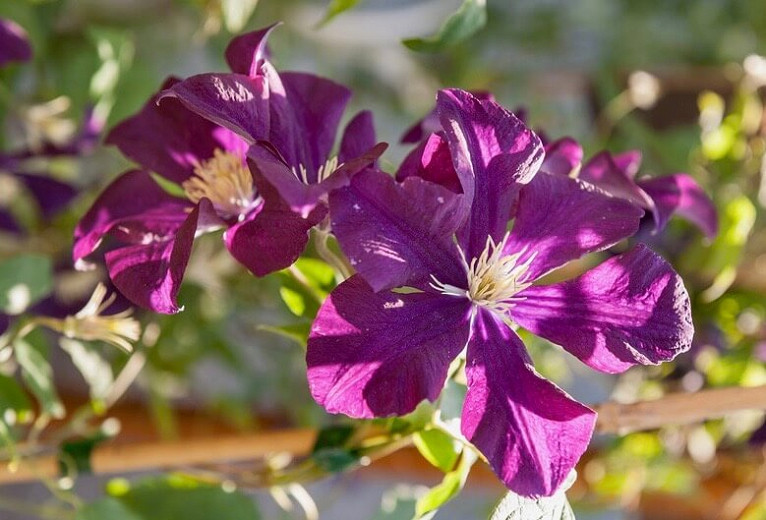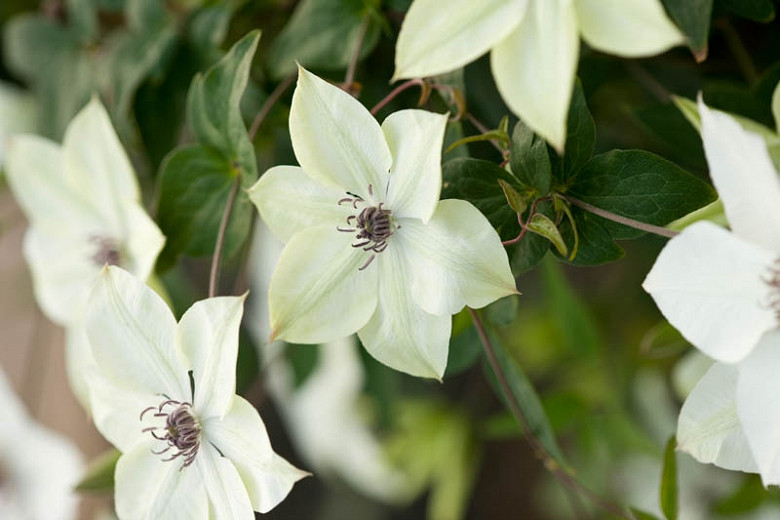Clematis virginiana (Virgins Bower)
Clematis virginiana (Virgin's Bower) is a large deciduous climber with masses of sweetly fragrant, pure white flowers, 1 in. across (2.5 cm), from late summer to fall. The blossoms are so profuse that they generally cover the foliage of trifoliate bright-green leaves. Even after flowering is over, this vine remains attractive, thanks to the plume-like seedheads left by the passing female flowers, therefore providing winter interest. Lacking tendrils, the vine supports itself by means of twisted stems, or petioles, that wrap around other plants. Without support, it will sprawl along the ground as a dense ground cover. Adding charm, fragrance and color in the late season garden, this vigorous and extremely floriferous vine is perfect for covering a wall, fence or arbor.
- Quickly grows up to 10-20 ft. long (3-6 m). Can spread aggressively by self-seeding and suckering.
- Thrives in medium to wet, well-drained soils, in full sun or part shade. Ideally, Clematis prefer having their 'heads in the sun and their feet in the shade'. Unlike most clematis, Virgin's Bower is tolerant of considerable shade. Prefers moist, rich soils, but will also thrive in dry shade.
- This Clematis belongs to the third group of Clematis – a group including Clematis which flower in late summer on growth made in that season. They should be pruned in late winter or early spring and require 'hard pruning': simply cut back the stems to a pair of strong buds about 1ft. (30 cm) above ground level before growth begins in early spring. Cut back immediately after bloom where self-sown seedlings are a problem.
- Keep an eye out for clematis wilt, powdery mildew, leaf spots, rust, aphids, vine weevils, scale, earwigs and spider mites.
- Native to Eastern North America.
- The leaves of this species are poisonous to humans.
- Toxic to dogs, toxic to cats, toxic to horses.
Requirements
| Hardiness | 3 – 9 |
|---|---|
| Plant Type | Climbers |
| Plant Family | Clematis |
| Exposure | Full Sun, Partial Sun |
| Season of Interest | Summer (Mid,Late)Fall |
| Height | 10' – 20' (3m – 6m) |
| Spread | 3' – 6' (90cm – 180cm) |
| Water Needs | Average |
| Maintenance | Low |
| Soil Type | Chalk, Clay, Loam, Sand |
| Soil pH | Acid, Alkaline, Neutral |
| Soil Drainage | Moist but Well-Drained |
| Characteristics | Fragrant, Showy |
| Native Plants | United States, Midwest, Illinois, Indiana, Iowa, Kansas, Michigan, Minnesota, Missouri, Nebraska, North Dakota, Ohio, South Dakota, Wisconsin, Northeast, Connecticut, Delaware, Maine, Massachusetts, Maryland, New Hampshire, New Jersey, New York, Pennsylvania, Rhode Island, Vermont, Southeast, Alabama, Arkansas, Florida, Georgia, Kentucky, Louisiana, Mississippi, North Carolina, South Carolina, Tennessee, Virginia, West Virginia, Southwest, Oklahoma, Texas |
| Tolerance | Deer |
| Attracts | Butterflies, Hummingbirds |
| Garden Uses | Arbors, Pergolas, Trellises, Walls and Fences |
| Garden Styles | Informal and Cottage |
